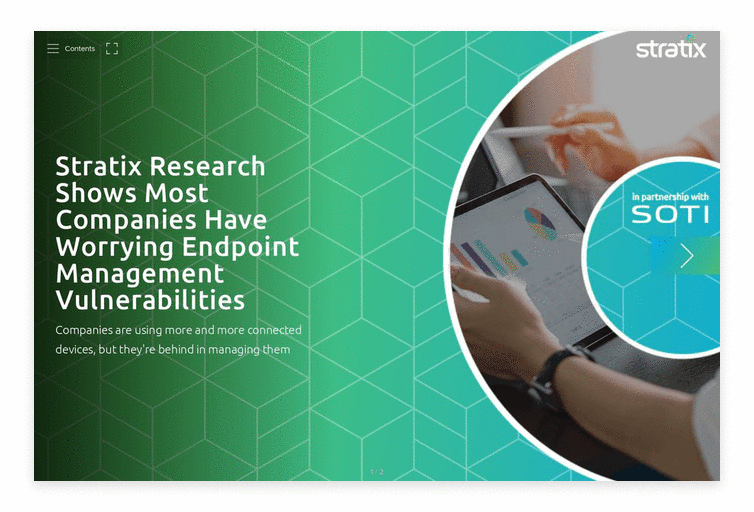Majority of Businesses Don’t Have a Comprehensive Endpoint Management Strategy
Written by Ian Slack
Blog
As companies have adopted mobile technology solutions like smartphones over the years, they’ve also implemented mobile device management (MDM) platforms to keep devices updated and secure. Older technologies like PCs were managed separately. But that’s become a problem as the number of endpoints used by organizations has skyrocketed. The average enterprise manages tens of thousands, including phones, tablets, scanners, laptops, IoT, printers, bring your own device (BYOD), and more. When various endpoint solutions are managed independently, you have an unnecessarily complex environment that wastes time and money. It’s also significantly less secure.
How wide a problem is it? New research by Stratix shows that 94 percent are using more than one endpoint management platform.
Only six percent had one, while the majority averaged between two and four. That means they have fractured environments that force IT teams to go to each management platform to perform routine IT tasks like patches and updates.
Not only are siloed systems harder to manage, but the lack of a holistic strategy means the user experience is not uniform across devices. Endpoints often fall through the cracks, which is a significant security concern. Our research found a whopping 30 percent of endpoints in companies are not adequately managed.
Considering the number and severity of cyber attacks in recent years, that’s a very troubling statistic.
The solution is holistic unified endpoint management (UEM), where every device in an organization is managed from one platform. SOTI’s MobiControl is a good example. Using it, IT teams can deploy apps to any endpoint and manage updates. New devices can be enrolled and provisioned anywhere. You can track devices to see who’s using them and how often. It’ll help you identify and neutralize security risks in IoT endpoints and protect critical data.
The majority of IT leaders are aware of the advantages of UEM even if they don’t have it. Seventy six percent of the respondents in our survey called the lack of a comprehensive UEM solution a vulnerability.
So why haven’t they moved to a comprehensive platform? Many organizations are limited by small IT teams and a lack of expertise, so there’s an inability to improve. Outsourcing endpoint management could be a solution. Ninety-four percent of those who outsource said they’re happy with their provider, and only six percent are not.
Those who are satisfied said these things about their provider:
- Cost-effective
- Provide certified experts
- Improve our policies
- Great response times
- Streamline, good quality, reliable
- Frees me up
While some IT teams may be reluctant to outsource because of the perception of losing control or poor quality, our research shows there’s actually more of both when you have the expertise and accountability of a high-quality managed services provider.
Interested in talking more about your endpoint management strategy? Reach out to Stratix today.

Stratix Research Shows Most Companies Have Worrying Endpoint Management Vulnerabilities
Read the full research report we did in partnership with SOTI, where we dive in deeper to examine why organizations aren't doing better in this area.
Read Research Report













